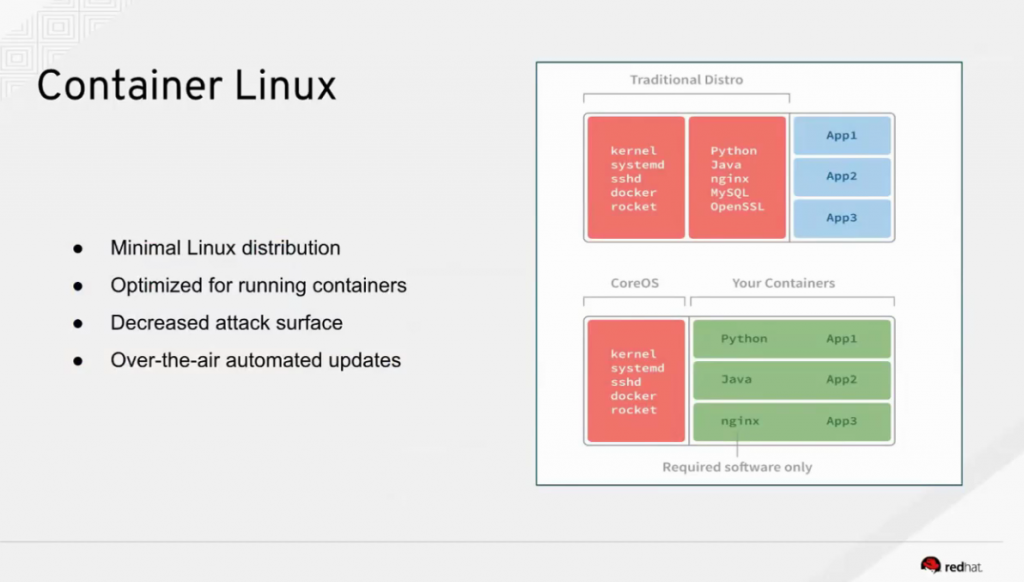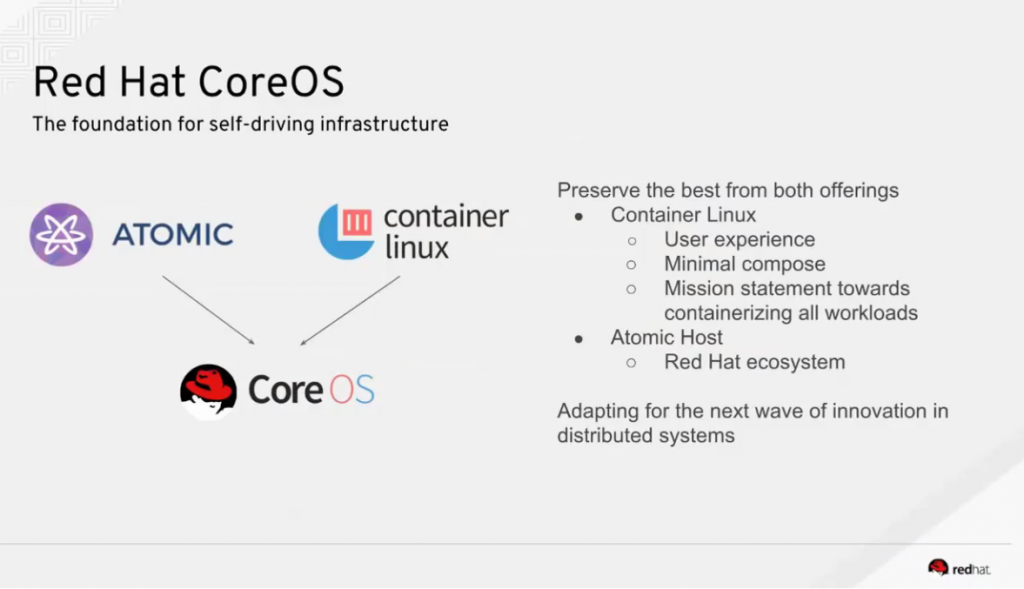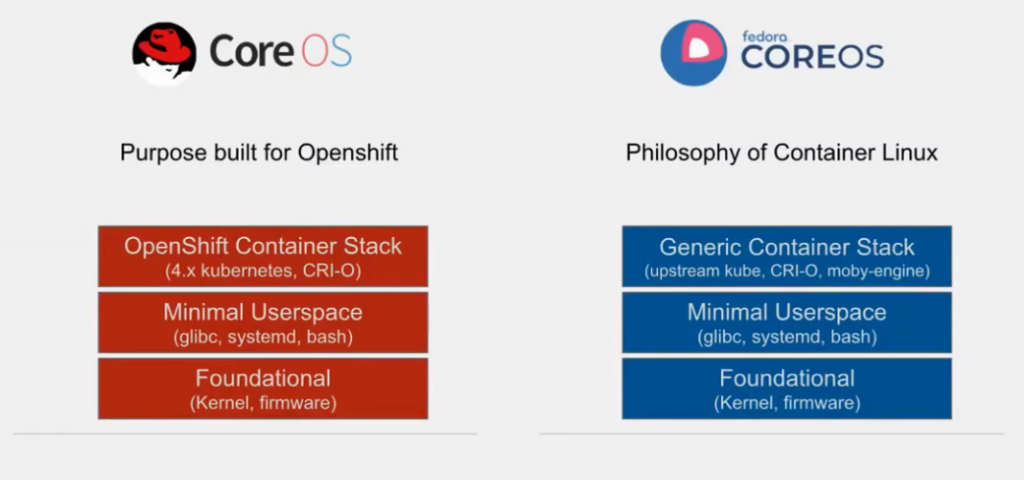This week the OpenShift Commons Briefing held a very informative webinar focusing on the plans for CoreOS. If you are currently running containers – OpenShift or otherwise – then you’ll be especially interested in the video at the end of this post.
Red Hat acquired CoreOS earlier this year. Project Atomic and CoreOS Container Linux had many of the same aims but the technologies behind them were slightly different. Essentially, you want a very minimal base Operating System to host the containers.
All screenshots are taken from https://www.youtube.com/watch?v=KGw4Y-bdOqE
The following shows how a typical Linux distribution compared with Container Linux.

Red Hat are preserving the very best technologies from Container Linux and Atomic Host and bringing them together to form Red Hat CoreOS.

Red Hat CoreOS will be purposely built and optimised to run OpenShift – each release can make sure the functionality matches the requirements that OpenShift demands. Fedora CoreOS will use a similar base and userspace as Red Hat CoreOS, but will provide generic container runtime support where you can have a bit more choice about what you want to run.

Full details around the Fedora release can be found at the Fedora CoreOS Website. The project is currently aiming to have it’s first release ready for 2019, possibly as soon as Fedora 30.
For full details, check out the video:
